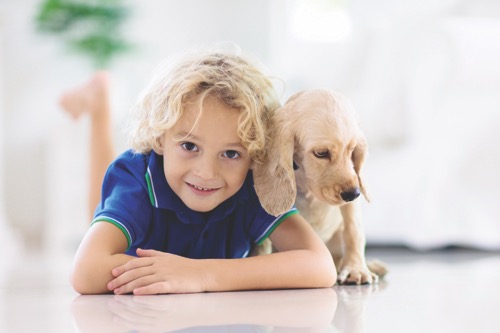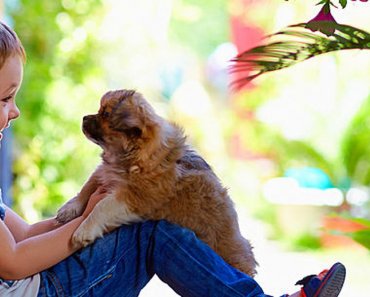
For original article click here
Safety Tips for Pets and Kids
If your child’s first friend has four legs, here’s good news: per a recent study in Pediatrics, kids living in homes with dogs get sick less often than those in pet-free homes. Another study found that babies who lived with cats or dogs had fewer allergies later in life. And living with a pet can help curious little ones begin to develop empathy and kindness toward others. New research shows that kids even prefer their pets to their siblings.
Here’s what to know to help kids and pets live together peacefully, from birth through the teen years.
EARLY YEARS
Pet Prep
Your child may begin asking for a new pet during preschool, but that doesn’t mean he or she is ready to begin caring for one. If your family decides to take the pet plunge with a small child in the home, a smooth transition to pet ownership will involve plenty of preparation. Begin with a picture book about adding a new pet to the family, like “Lola Gets a Cat” by Anna McQuinn or “Our Very Own Dog” by Amanda McCardie.
Talk about safety guidelines — young children should not be alone with pets, particularly fragile young puppies or kittens — and who will handle which pet chores. While tots and preschoolers shouldn’t feed or walk new pets alone, your child may enjoy selecting toys, gently brushing the pet’s coat, or playing with the pet (under close caregiver supervision, of course).
Another must: take your pet to the veterinarian for a routine health examination and necessary vaccinations. While you’re there, make plans to spay or neuter. The Humane Society reports that sterilized pets are healthier, calmer, and less likely to bite — making them better companions for little humans.
ELEMENTARY YEARS
Behavior Basics
By grade school, kids may be ready for a larger role in walking, training and feeding the family pet. Animals pay attention to the people who feed them, so when kids are old enough, it’s a good idea to get them involved, says certified trainer Wynona Karbo of Seattle’s Ahimsa Dog Training.
“When a young child feeds a pet, keep the pet out of the area, if possible — using a baby gate, if necessary — so the animal doesn’t jump on the child during feeding and create negative habits,” she says.
If your new pet is a dog, teach kids vital safety guidelines to avoid bites; more than half of the country’s 4.7 million annual dog bites happen to children under age 14.
“Far too many children (and many adults) get away with completely unacceptable behavior toward dogs,” says Brad Howell, of Red Beard Dog Training, based in Greensboro, N.C. “Pulling ears, climbing and jumping on, or any invasion of space isn’t a position a lot of dogs want to be in, even if they don’t always give a clear sign they are annoyed. When dogs do show teeth, growl or even nip, we need to take a step back and examine what triggered the behavior.”
Teach children to observe and respect a dog’s cues, and they’ll be safer not only around your family dog, but any other dog they meet.
TEEN YEARS
Teen’s Best Friend
Whether you’re ready to add another animal to the family or your older child wants his or her own bundle of fur, the teen years can be a great time to adopt a pet. Teens are old enough to walk and feed a pet independently, participate in training, even pick up pet food and ferry the animal to the vet or groomer’s. (Just know that you might end up with full custody of the pet once your child heads off to college.)
What’s the right pet for your family? Your local climate, favorite pastimes and activity level should factor into your choice, Howell says. Families who travel often or spend long stretches away from home may want to consider a cat instead of a dog. Those with a passion for sailing or watersports might be good candidates for a dog breed that enjoys water; if you or your teen wants to hike or run with your pet, choose an active dog that can handle exertion. If your teen’s heart is set on a dog or a puppy, plan to commit hours to training, socialization and exercise. And don’t overlook an older dog or cat as a companion for a busy teen, Howell says, adding, “sweet, lazy old pets are the most underrated and overlooked.”
Malia Jacobson is an award-winning health and parenting journalist and mom of three. Her latest book is “Sleep Tight, Every Night: Helping Toddlers and Preschoolers Sleep Well Without Tears, Tricks, or Tirades.”



























